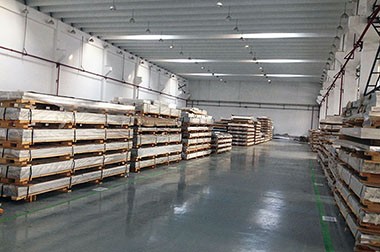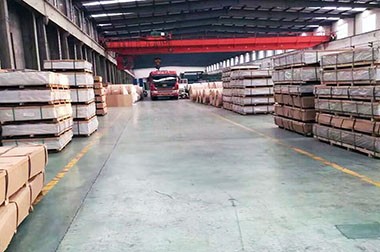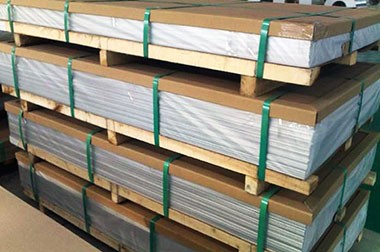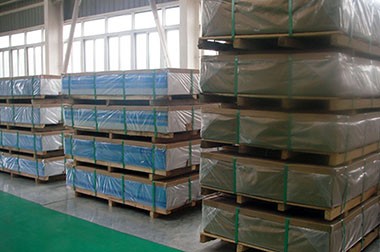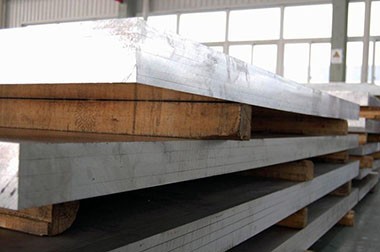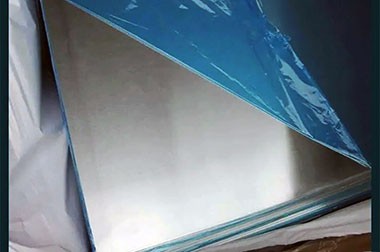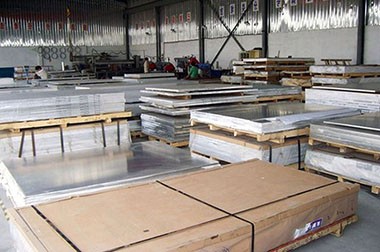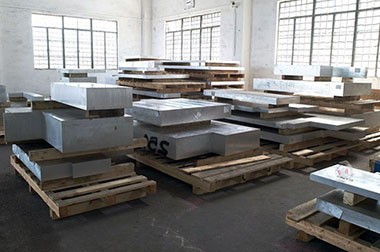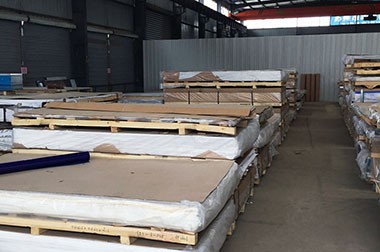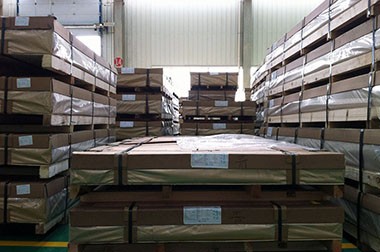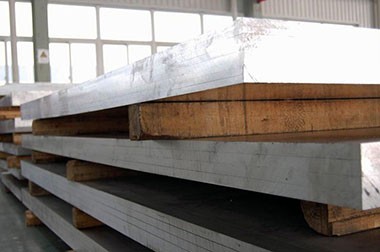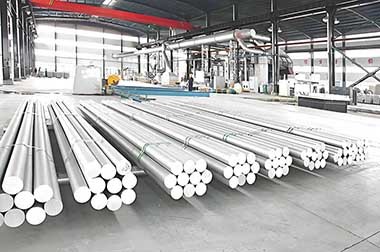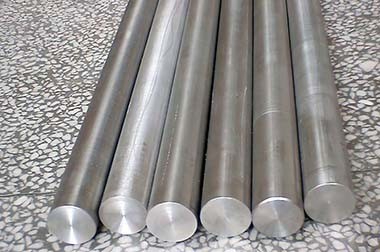2618 Aerospace Grade Aluminum Sheet Plate
What is 2618 aluminum alloy?
2618 aluminum is a high-strength, heat-treatable aluminum alloy known for its excellent performance in high-temperature environments.
2618 aluminum alloy is a high-strength aluminum alloy primarily composed of aluminum, copper, and small amounts of other elements such as magnesium, silicon, and manganese. It belongs to the 2xxx series of aluminum alloys, which are known for their high strength-to-weight ratio and good machinability, making them suitable for aerospace and automotive applications.

2618 aluminum alloy is a high-strength aluminum alloy primarily composed of aluminum, copper, iron, magnesium, and a small amount of nickel, with copper content around 2% and magnesium content around 1.5% being its key characteristics. It is widely used in critical components in aerospace, defense, motorsports, and high-temperature environments, such as jet engine pistons, rotor components, and other structural parts.
- Advantages: 2618 aluminum alloy exhibits excellent high-temperature strength, making it suitable for high-performance applications.
- Disadvantages: Corrosion resistance is somewhat inferior, requiring surface treatment for protection, and the material is relatively costly.
2618 aerospace aluminum plate is a high-strength aluminum alloy material widely used in aerospace, automotive manufacturing, and other high-performance engineering fields.
The 2618 aerospace aluminum plate is primarily based on aluminum-copper as the alloying elements, with the addition of small amounts of magnesium, lithium, chromium, and other elements to enhance the material's performance.
| Property | Details |
| Principal Design Features | 2618 alloy contains copper and magnesium and is age hardenable, providing good strength in applications exposed to heat up to 575°F. |
| Applications | 2618 aluminum commonly used in the manufacture of aircraft engines. |
| Machinability | Excellent machining characteristics. The heat-treated (aged) condition allows for a smoother finish compared to annealed or water-quenched conditions. |
| Forming | Good formability, both hot and cold. |
| Welding | Resistance welding is satisfactory. Conventional fusion welding methods should not be used due to potential harm from heat input. |
| Heat Treatment | Solution heat treatment at 985°F for a period allowing thorough heating and solutioning (up to 24 hours for heavy sections), followed by water quenching. Annealing and aging treatments are also possible. |
| Forging | Hot forging is done in the range of 970°F down to 700°F, starting with material preheated to 970°F. |
| Hot Working | Hot working is possible in the temperature range of 660°F to 700°F. |
| Cold Working | Good formability and readily cold worked in either the solution heat-treated or annealed condition. |
| Annealing | Annealing is done at 725°F for 4 hours, followed by slow cooling (typically furnace cooling). |
| Aging | Aging (T 61) involves solutioning at 980°F for up to 24 hours, followed by quenching in boiling water, and aging at 390°F for up to 20 hours, air-cooled. |
| Tempering | Not applicable to this alloy. |
| Hardening | Hardens through cold working and aging heat treatment for T 61 condition. See "Aging". |
| Other Physical Properties | Electrical conductivity: 36% of copper. |
| Other Mechanical Properties | Shear strength for T 61 (aged) material is 40 ksi. |
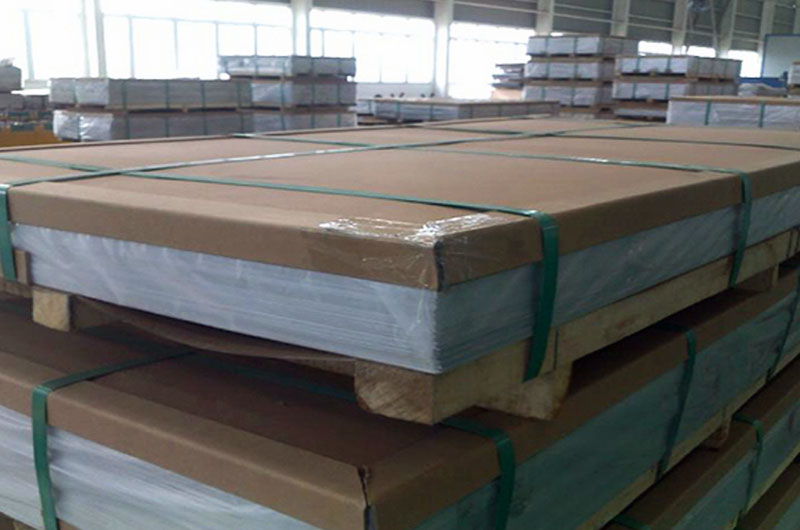
Characteristics of 2618 Aerospace Aluminum Plate
- High Strength and Excellent Strength-to-Weight Ratio: 2618 alloy has a high strength-to-weight ratio, making it particularly suitable for applications that require high strength and low weight.
- Corrosion Resistance: Despite its high copper content, 2618 still has excellent atmospheric corrosion resistance, making it ideal for aerospace and automotive applications.
- Good Weldability and Fatigue Resistance: The alloy can be welded and has strong fatigue resistance, making it an ideal choice for high-performance automotive and aerospace components.
- High-Temperature Performance: 2618 aluminum alloy maintains good mechanical strength at temperatures up to 300°C. It exhibits excellent stability under high temperatures, making it suitable for applications like pistons and rotors in high-temperature environments.
- Machinability: The alloy has excellent machinability, allowing for precision machining, polishing, and surface treatments such as anodizing and nickel plating.
- Heat Treatable for Strengthening: The alloy's strength and hardness can be further enhanced through heat treatment processes such as T6 tempering.
- Welding and Machinability: While 2618 alloy's weldability is relatively poor, it has good machinability after heat treatment.
- Low Density: As an aluminum alloy, 2618 has a low density, which helps reduce the overall weight of structures.
The specification introduction of 2618 aerospace grade aluminium plate
2618 alloy conforms to standards such as DIN 3.1924, DTD 717A, and MSRR 8018, and is widely used in industrial and military fields that require high strength and high-temperature resistance.
| Alloy | 2618A 2618 |
| Temper | O, T6, T62, T651, T351, T81, T851 etc. |
| Thickness | 0.5mm-300mm |
| Width | 500-2650mm |
| Length | 500-12000mm |
2618 Aluminum Sheet Plate Standards and Specifications
- ASTM: B247 (for forgings).
- AMS: 4120 (aerospace).
- Others: ISO 209, EN standards.
2618 Aluminum Plate Corrosion Resistance
Due to its copper content, the corrosion resistance is lower than that of 5xxx/6xxx alloys. Coating (anodizing, painting) is required in corrosive environments.
Corrosion Resistance of 2618 Aluminum Plate:
2618 aluminum plate, due to its high copper content, has relatively low corrosion resistance. Compared to 5xxx and 6xxx series aluminum alloys, 2618 does not offer sufficient resistance to long-term corrosive environments. In particular, in marine or humid climatic conditions, untreated 2618 aluminum plate may be prone to corrosion issues. Therefore, additional protective measures are usually required in these environments.
Coating Requirements:
To enhance the corrosion resistance of 2618 aluminum plate, surface treatments such as anodizing or painting are typically necessary. These coatings provide an extra protective barrier on the aluminum surface, preventing further damage in corrosive environments. Anodizing not only enhances the corrosion resistance of aluminum plates but also improves their appearance, while painting adds an additional protective film, extending their service life.
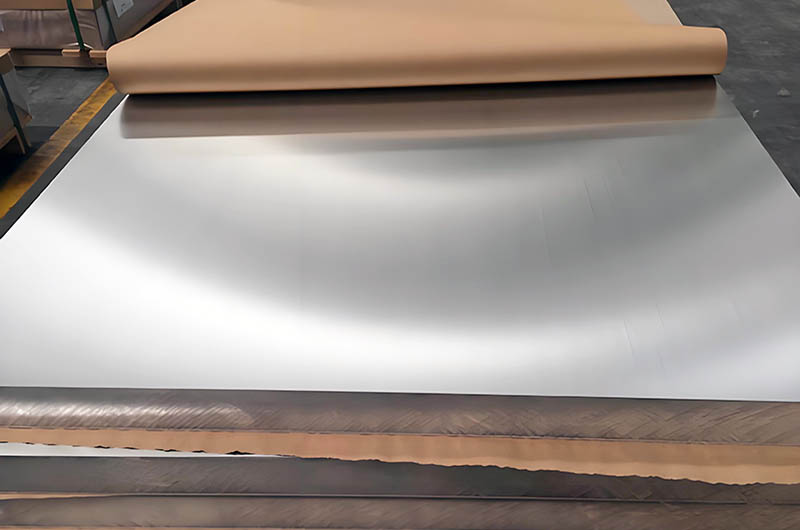
2618A 2618 T61 Aluminum Sheet Plate
2618 aluminum alloy can be heat-treated to a T6 state through solution treatment and aging or to a T6511 state through controlled stretching. After heat treatment, its strength is significantly increased, but dimensional stability may be reduced.
2618 T61 Aluminum Alloy Plate
- Temper: The T61 temper refers to a specific heat treatment process that enhances the alloy's mechanical properties.
- Performance: Similar to 2618A, 2618 T61 aluminum alloy plates have high strength, good formability, and weldability, making them suitable for use under high temperature and high-load conditions.
- Applications: Widely used in aerospace, automotive, and other fields requiring high strength and high-temperature performance.
2618A and 2618 T61 aluminum alloy plates, with their excellent performance, especially in high-temperature and high-strength applications, make them ideal choices for aerospace and high-performance automotive manufacturing. Their machinability and corrosion resistance also make them highly favored in various industrial applications.
Haomei Aluminum 2618 Product Forms
- 2618 Aluminum Forgings
- Aluminum 2618 Round Bar
- Aluminum 2618 Flat Bar
- Aluminum 2618 Rectangular Bar
- Aluminum 2618 Rolled Rings
- Aluminum 2618 Forged Rings
- Aluminum 2618 Disc
- 2618 Aluminum Sheet
- 2618 Aluminum Plate
- 2618 Aluminum Extrusion
- 2618 Aluminum Extrusion Angles
- 2618 Aluminum Billet
- 2618 Aluminum Ingot
- 2618 Aluminum Machined Parts
The chemical composition of 2618 aircraft aluminum plate
| Element | Composition % |
| Si | 0.10-0.25 |
| Fe | 0.9-1.3 |
| Cu | 1.9-2.7 |
| Mn | - |
| Mg | 1.3-1.8 |
| Ni | 0.9-1.2 |
| Zn | 0.10 |
| Ti | 0.04-0.10 |
| Other | 0.20 |
| Al | Remainder |
Typical Mechanical Data for 2618 Aluminum
| Physical Performance Indicators | Tensile Strength (MPa) | Yield Strength (Mpa) | Elongation (%) |
| 2618 - T61 | 360 | 285 | 4 - 7 |
The physical properties of 2618 aircraft aluminum plate
| Density | 2.77 g/cm3 |
| Melting range | 529°C |
| Thermal Expansion | 21.6×10-6 /K |
| Modulus of Elasticity | 71 GPa |
Applications of 2618 Aerospace Aluminum Plate
- Aerospace: Due to its high strength and lightweight characteristics, 2618 aluminum alloy is commonly used in aircraft structures, engine components, high-temperature parts, and other aircraft components.
- Automotive Industry: In high-performance vehicles, 2618 aluminum alloy is used to manufacture engine components and body structures.
- Racing: Engine pistons, drivetrain systems, and high-strength parts in high-temperature environments.
- Military: Components for military equipment that require heat resistance and high strength.
1. Aircraft Structural Components
2618 aluminum alloy is commonly used in aircraft wings, fuselage frames, and other load-bearing structural components.
Advantages: 2618 aluminum alloy is an aluminum-copper alloy with excellent strength and rigidity, making it particularly suitable for applications that require high load-bearing capacity and structural integrity, such as major structural components of aircraft. Compared to other aluminum alloys, it has higher strength and superior fatigue resistance, allowing it to maintain stable performance under significant stress.
Performance Advantages:
- High Strength: In high-stress environments, 2618 aluminum alloy can provide reliable strength support.
- Heat Resistance: Compared to standard aluminum alloys, 2618 maintains high mechanical performance at elevated temperatures.
- Lightweight: With a low density while ensuring strength, 2618 aluminum alloy helps reduce the overall weight of the aircraft, improving flight efficiency.
2. Engine Components
2618 aluminum alloy is also widely used in aerospace engines, commonly found in high-temperature components such as turbine casings and guide vanes.
Advantages: The working environment inside an aircraft engine is extremely high in temperature, and standard materials are prone to creep or deformation. In contrast, 2618 aluminum alloy possesses excellent high-temperature resistance and oxidation resistance, allowing it to maintain stable mechanical performance in high-temperature environments. This makes it particularly suitable for load-bearing components in engines and areas subjected to harsh thermal cycling conditions.
Performance Advantages:
- High-Temperature Strength: In the high-temperature operating environment of an engine, 2618 aluminum alloy still exhibits excellent strength performance, capable of withstanding continuous thermal stress.
- Corrosion Resistance: Engine components are prone to oxidation and corrosion at high temperatures; the oxidation resistance of 2618 aluminum alloy enhances its durability in engine operation.
Due to its outstanding strength-to-weight ratio and stability in high-temperature environments, 2618 aluminum alloy has become an indispensable material in the aerospace field. Whether used as structural components of aircraft or as critical components in engines, 2618 aluminum alloy provides reliable performance support, helping to enhance the safety, efficiency, and durability of aircraft.
Comparison of 2618 Aluminum with Other Alloys
| Comparison Item | 2618 Aluminum vs 2024 Aluminum | 2618 Aluminum vs 7075 Aluminum | 2618 Aluminum vs 6061 Aluminum |
| High-Temperature Performance | 2618 aluminum alloy performs better than 2024 aluminum alloy in high-temperature environments, maintaining superior strength and stability at elevated temperatures. Therefore, it has advantages in aerospace and high-temperature applications. | 2618 aluminum alloy offers better thermal stability and maintains good mechanical properties in high-temperature environments, whereas 7075 aluminum alloy experiences significant strength degradation at high temperatures. Thus, 2618 aluminum alloy is preferred in applications such as aerospace engine components and high-temperature structural parts. | 2618 aluminum alloy has significantly higher strength in high-temperature environments compared to 6061 aluminum alloy. Therefore, it is more competitive in applications requiring high-temperature strength, such as aerospace engine components and high-performance racing parts. |
| Room Temperature Strength | The room temperature strength of 2618 aluminum alloy is comparable to that of 2024 aluminum alloy, though it may be slightly lower in some conditions. Thus, for applications requiring extreme strength, 2024 aluminum alloy remains a more common choice. | The room temperature strength of 2618 aluminum alloy is lower than that of 7075 aluminum alloy. 7075 aluminum alloy has exceptionally high strength at room temperature, making it more competitive in applications requiring high strength, such as aircraft structures and high-load components. | 2618 aluminum alloy has higher room temperature strength than 6061 aluminum alloy, making it more advantageous in some aerospace and industrial applications. However, 6061 aluminum alloy is more widely used for structural components with moderate strength requirements. |
| Corrosion Resistance | 2618 aluminum alloy has poorer corrosion resistance than 2024 aluminum alloy. This is mainly due to its higher copper content, making it more susceptible to oxidation and corrosion in humid or corrosive environments. Therefore, in practical applications, 2618 aluminum alloy typically requires additional protective treatments such as anodizing or coatings to improve its corrosion resistance. | The corrosion resistance of 2618 aluminum alloy is similar to that of 7075 aluminum alloy, both being relatively low due to their high copper content. They are prone to corrosion in humid and corrosive environments, making additional surface protection, such as anodizing or coatings, necessary in practical applications. | The corrosion resistance of 2618 aluminum alloy is far inferior to that of 6061 aluminum alloy. The latter, as a 6xxx series aluminum alloy, contains magnesium and silicon, providing better corrosion resistance. Therefore, for applications requiring high corrosion resistance, such as marine and architectural structures, 6061 aluminum alloy is the more suitable choice. |
2618 Aluminum Sheet Plate Manufacturing Considerations
- Machinability: Medium; requires carbide tools and lubrication.
- Welding: Challenging (risk of cracking); TIG or MIG with pre/post heat treatment.
- Forming: Best performed at high temperatures (350-450°C) to improve ductility.
2618 aluminum has many advantages, but it has moderate corrosion resistance. Therefore, for corrosive environments, protective measures such as anodizing or coatings are recommended.
2618 aluminum is a versatile alloy that combines high strength, excellent machinability, and thermal stability, making it an ideal choice for demanding applications in aerospace, automotive, and defense industries.

